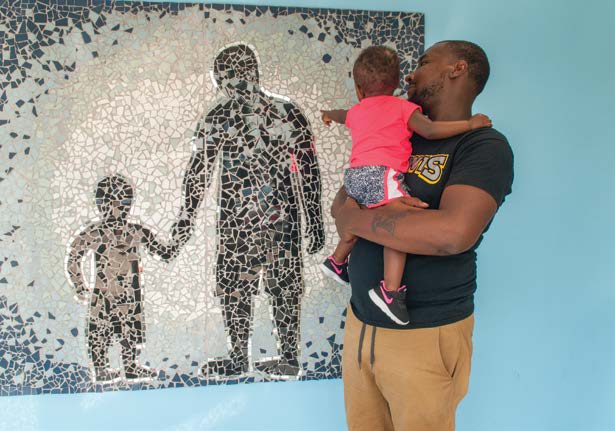
Chiaki Kawajiri for the Annie E. Casey Foundation
.
With limited access to education and lucrative employment, young parents and their children suffer disproportionately high poverty rates, yet they are often ignored by policymakers, according to a new report from the Annie E. Casey Foundation.
“Opening Doors for Young Parents,” which relies on an analysis of U.S. Census data, found that 3.4 million American children live with 2.9 million parents between the ages of 18 and 24. Of those children, 37 percent live in poverty — nearly twice the national child poverty rate.
The median family income for young parents is $23,000, slightly above the federal poverty level for a family of three. Sixty-nine percent of these young families have incomes lower than 200 percent of the federal poverty level. That ranges from 53 percent in Vermont to 85 percent in Maine.
Oklahoma has the highest percentage of young adult parents, as 18 percent of Oklahomans ages 18 to 24 live with children, followed by Alabama, Louisiana, Mississippi and New Mexico at 16 percent, according to the Casey press release. More than half of young parents in the U.S. — 55 percent — are people of color, Casey reported.

Laura Speer
“We have done a lot over the years as a field to look at what’s going on with teen parents but have not spent a lot of time looking at parents between the ages of 18 and 24,” said Laura Speer, associate director for policy reform and advocacy at the Casey Foundation.
“We felt this was a moment because getting that postsecondary credential is more critical than ever and the cost of raising a child is so high,” she said. “The bar has been raised.”
The study found that only 12 percent of young parents have at least an associate’s degree, Speer said. “That’s very low, much lower than the national average, and we think it’s something of concern,” she said.
Lack of educational attainment is a key reason why so many young families are poor even though the majority of young parents are married and living together, a fact Speer called “something of a myth buster.”
Child care needed
One of the report’s recommendations is to increase their access to education by subsidizing child care and providing it on college campuses and at vocational training programs.

Pat Paluzzi
“Job training programs are often not structured in ways that acknowledge people are parents,” Speer said. “Why not use workforce training funds to cover child care expenses?”
“It has always been challenging to find people who will fund programs in this area,” said Pat Paluzzi, president and CEO of the Healthy Teen Network. “This kind of report is incredibly important because you don’t see much of it.”
It is a vulnerable population “but also a very amenable population,” Paluzzi said. She praised the report for noting that young parents are themselves in an important stage of brain development where supportive programs can make a big difference.
“If you offer these kinds of supports, both the parents and their children can do OK,” she said.
The report emphasizes that social service programs are particularly likely to ignore young fathers. “Home visiting programs, for example, are structured around the assumption that they are for mothers,” Speer said.
Another policy barrier it identifies is the minimum age of 25 to qualify for the federal earned income tax credit, which sends low-income workers a check at tax time. This was designed to exempt students from middle-class families but also prevents young families from qualifying. The report recommends dropping the minimum age to 18 for parents and to 21 for childless workers, a measure that would help nonresident fathers pay child support. It also suggests an expanded child tax credit for families with young children.
Finally, the report calls for policies that support young parents “involved in systems,” such as extending support for parents in foster care to age 26 and not separating babies from young parents who are in foster care.































